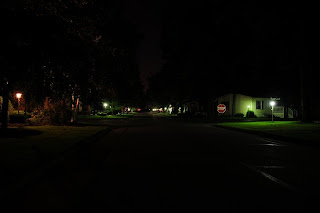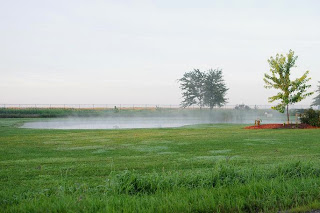Tech Specs
Focal Length: 35mm
Dimensions: 3.7 x 3.0 in.
Weight: 23.5oz.
Maximum Aperture: f1.4
Minimum Aperture: f16
Diaphragm Blades: 9 (rounded)
Front Element: non-rotating, non-extending
Optical arrangement: 13 elements in 11 groups
Autofocus Mechanism: HSM
Closest Focus: 11.8 inches
Maximum magnification: .19x
Filter Size: 67mm
Focal Length: 35mm
Dimensions: 3.7 x 3.0 in.
Weight: 23.5oz.
Maximum Aperture: f1.4
Minimum Aperture: f16
Diaphragm Blades: 9 (rounded)
Front Element: non-rotating, non-extending
Optical arrangement: 13 elements in 11 groups
Autofocus Mechanism: HSM
Closest Focus: 11.8 inches
Maximum magnification: .19x
Filter Size: 67mm
'A' is for Art.
Background
At Photokina 2012, Sigma announced that it was revamping its lineup. Gone would be the plethora of acronym designations ind arriving would be a much simpler, 3-designation system. One of the new lines of lenses was the 'Art' series, designed for the serious photographer who values the utmost potential for creativity. At announcement of the lineup reboot, Sigma announced a 3 new lenses, one for each category. At the time, Sigma had long been producing a highly-regarded 30mm f1.4 exclusively for sub-frame cameras, so a similarly specified enlarged optic for full frame/film did not seem so out of the blue. The big question: would the new lens live up to the hype?
Background
At Photokina 2012, Sigma announced that it was revamping its lineup. Gone would be the plethora of acronym designations ind arriving would be a much simpler, 3-designation system. One of the new lines of lenses was the 'Art' series, designed for the serious photographer who values the utmost potential for creativity. At announcement of the lineup reboot, Sigma announced a 3 new lenses, one for each category. At the time, Sigma had long been producing a highly-regarded 30mm f1.4 exclusively for sub-frame cameras, so a similarly specified enlarged optic for full frame/film did not seem so out of the blue. The big question: would the new lens live up to the hype?
Metal mount, distance window, manufacturer-grade construction.
Build Quality: 5/5
The Sigma 35 f1.4 DG HSM Art is built to very high standards that put it on equal footing with many current manufacturer lenses. As for construction, the lens is built on a metal mount and the barrel seems to consist of both metal and plastic sections. The lens features just a single switch to control the AF, making for a very clean look. There is also a recessed distance scale behind a window, a feature that, just a handful of years ago, would have been unheard of on a third-party lens. As for feel, the lens is a pleasure to shoot with as it features ample grip in both a ribbed, rubberized focus ring as well as a similarly-textured rear barrel. All in all, you won't have to worry about your sweaty/wet hands slipping off of where you want them.
Survivability
This lens contains electronics and is focused by a built in motor, which will eventually die. If you want this lens, but it factory new with warranty as Sigma will have to fix it for free if it breaks within the warranty period and for a cost even out of warranty so long as parts are available.
See Also: Weather-Resistant Sigma Lenses
Other side of the lens. Note the ribbing on the rear barrel.
AF Performance: 5/5
Focus is as fast and accurate thanks to Sigma's Hypersonic Motor (HSM) AF drive. Additionally, being a ring-type motor, the HSM mechanism allows for full time manual focus simply by grabbing and turning the focus ring, no need to flip a switch. In reality, the AF/MF switch can be thought of as more of an AF/AF disable switch.
That smooth boken is a result of 9 rounded aperture blades.
Background Blur
Thanks to those 9 rounded diaphragm blades (above), background blur is silky smooth (below).
Manually focus to infinity and forget it!
Competition
When it comes to the 35mm f1.4 market segment, there is lots of competition as this is a very popular focal length lens among photographers. Canon, Nikon, and Sony all make such optics. Unfortunately, I haven't gotten to play with any of them, which means that I can only give second-hand comparisons. Reading reviews of the competition vs. the Sigma, the Sigma seems to be every bit as good (some sites say even better) than the Canon and Nikon optics while the Sony is widely considered to be a $1300+ dog. If you're a crop cam shooter, skip this lens and get Sigma's highly regarded 30 f1.4 as it costs a lot less and is a lot smaller and lighter as it's only designed to cover a sub-frame imaging circle.
Samples
Sigma Fan? Check Out These Reviews:
Sigma 24-105 f4 DG HSM OS Art
Sigma 100-300f4 DG HSM Apo
Build Quality: 5/5
The Sigma 35 f1.4 DG HSM Art is built to very high standards that put it on equal footing with many current manufacturer lenses. As for construction, the lens is built on a metal mount and the barrel seems to consist of both metal and plastic sections. The lens features just a single switch to control the AF, making for a very clean look. There is also a recessed distance scale behind a window, a feature that, just a handful of years ago, would have been unheard of on a third-party lens. As for feel, the lens is a pleasure to shoot with as it features ample grip in both a ribbed, rubberized focus ring as well as a similarly-textured rear barrel. All in all, you won't have to worry about your sweaty/wet hands slipping off of where you want them.
Survivability
This lens contains electronics and is focused by a built in motor, which will eventually die. If you want this lens, but it factory new with warranty as Sigma will have to fix it for free if it breaks within the warranty period and for a cost even out of warranty so long as parts are available.
See Also: Weather-Resistant Sigma Lenses
Other side of the lens. Note the ribbing on the rear barrel.
AF Performance: 5/5
Focus is as fast and accurate thanks to Sigma's Hypersonic Motor (HSM) AF drive. Additionally, being a ring-type motor, the HSM mechanism allows for full time manual focus simply by grabbing and turning the focus ring, no need to flip a switch. In reality, the AF/MF switch can be thought of as more of an AF/AF disable switch.
Optics: 5/5
Sharpness
This lens is sharp, really sharp, and across the whole frame to boot! Initially looking at my pictures, I had to check the EXIF data to make sure that the pictures that I thought were shot at f1.4 were actually shot at f1.4! As for the performance, the lens is sharp right from the get-go at f1.4 in the center and mid portion of the frame with slight softness in the corners. Stopping down to f2 results in the corners catching up to the rest of the frame while f2.8 results in optimal sharpness across the frame as the center and mid frame areas are slightly (emphasis: slightly) sharper than at wider apertures. All in all, Sigma has quite an optical gem, even better than the legendary Nikkor 28 f1.4 AF-D, which says a lot!
This lens is sharp, really sharp, and across the whole frame to boot! Initially looking at my pictures, I had to check the EXIF data to make sure that the pictures that I thought were shot at f1.4 were actually shot at f1.4! As for the performance, the lens is sharp right from the get-go at f1.4 in the center and mid portion of the frame with slight softness in the corners. Stopping down to f2 results in the corners catching up to the rest of the frame while f2.8 results in optimal sharpness across the frame as the center and mid frame areas are slightly (emphasis: slightly) sharper than at wider apertures. All in all, Sigma has quite an optical gem, even better than the legendary Nikkor 28 f1.4 AF-D, which says a lot!
Vignetting
The lens does feature some obvious light falloff at f1.4, which is no real surprise considering that just about every f1.4 lens features this downfall. Yes, Sigma could have designed the lens with a 77 rather than a 67mm filter, but it's a lot easier to simply stop down the optics to f2 to reduce the problem significantly or f2.8 to eliminate it altogether than to carry around an even bigger, heavier lens.
Note: the vignetting wide open can also be used to create some cool effects in your pictures, such as increased subject isolation (flower) and an overall dreamy look (trail).
The lens does feature some obvious light falloff at f1.4, which is no real surprise considering that just about every f1.4 lens features this downfall. Yes, Sigma could have designed the lens with a 77 rather than a 67mm filter, but it's a lot easier to simply stop down the optics to f2 to reduce the problem significantly or f2.8 to eliminate it altogether than to carry around an even bigger, heavier lens.
Note: the vignetting wide open can also be used to create some cool effects in your pictures, such as increased subject isolation (flower) and an overall dreamy look (trail).
Distortion:
Very minimal and should be of no distraction.
CA
Virtually nil.
Very minimal and should be of no distraction.
CA
Virtually nil.
Only a tiny spot of green flaring shot right into the Sun.
Flare/Ghosting
Virtually nil here even in the most extreme conditions.
Virtually nil here even in the most extreme conditions.
That smooth boken is a result of 9 rounded aperture blades.
Background Blur
Thanks to those 9 rounded diaphragm blades (above), background blur is silky smooth (below).
Astrophotography
Infinity focus is actually infinity! Simply turn the focus ring until it stops and you'll have perfectly-focused stars all night!
Oh yes, the lens can AF on the Moon, too!
Value:
5/5
Simply put, where else can you get a currently produced 35mm f1.4 lens for FF/film for under $1,000? Answer: nowhere but here. Oh yes, the Sigma 35 f1.4 DG HSM Art is also a one heck of a lens, going to make it an even better bang for the buck.
Simply put, where else can you get a currently produced 35mm f1.4 lens for FF/film for under $1,000? Answer: nowhere but here. Oh yes, the Sigma 35 f1.4 DG HSM Art is also a one heck of a lens, going to make it an even better bang for the buck.
Competition
When it comes to the 35mm f1.4 market segment, there is lots of competition as this is a very popular focal length lens among photographers. Canon, Nikon, and Sony all make such optics. Unfortunately, I haven't gotten to play with any of them, which means that I can only give second-hand comparisons. Reading reviews of the competition vs. the Sigma, the Sigma seems to be every bit as good (some sites say even better) than the Canon and Nikon optics while the Sony is widely considered to be a $1300+ dog. If you're a crop cam shooter, skip this lens and get Sigma's highly regarded 30 f1.4 as it costs a lot less and is a lot smaller and lighter as it's only designed to cover a sub-frame imaging circle.
No light? No tripod? No stabilizer? No problem!
Conclusion:
5/5
By reading this far, the final conclusion should be a no-brainer: Sigma has really outdone itself on this one as the 35 f1.4 DG HSM Art is, without doubt, the best lens I have ever used! What else is there to say? The optics are truly superb, the AF is the best offered via current technology, the build is on-par with manufacturer lenses, and the price? Well, while it is not cheap at $900, you'll pay far less for Sigma's wonder lens than for the similar manufacturer optics that have no real advantages except for snob appeal. To put it plainly, I you shoot with FF digital and/or a compatible film camera and need the best, fast wide-standard lens around, look no farther than the Sigma 35f1.4 DG HSM Art. .
By reading this far, the final conclusion should be a no-brainer: Sigma has really outdone itself on this one as the 35 f1.4 DG HSM Art is, without doubt, the best lens I have ever used! What else is there to say? The optics are truly superb, the AF is the best offered via current technology, the build is on-par with manufacturer lenses, and the price? Well, while it is not cheap at $900, you'll pay far less for Sigma's wonder lens than for the similar manufacturer optics that have no real advantages except for snob appeal. To put it plainly, I you shoot with FF digital and/or a compatible film camera and need the best, fast wide-standard lens around, look no farther than the Sigma 35f1.4 DG HSM Art. .
Sigma Fan? Check Out These Reviews:
Sigma 24-105 f4 DG HSM OS Art
Sigma 100-300f4 DG HSM Apo
Like What You Just Read?
Why not
check out other great stuff about photography,
astronomy,
associated
gear, and how
to use it.
Think someone else would find this informative (or at least entertaining)? Use the buttons below to share!
Think someone else would find this informative (or at least entertaining)? Use the buttons below to share!














































